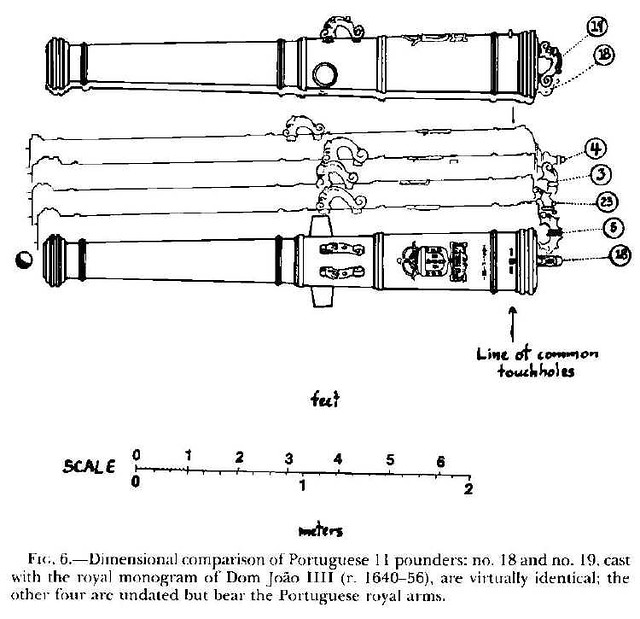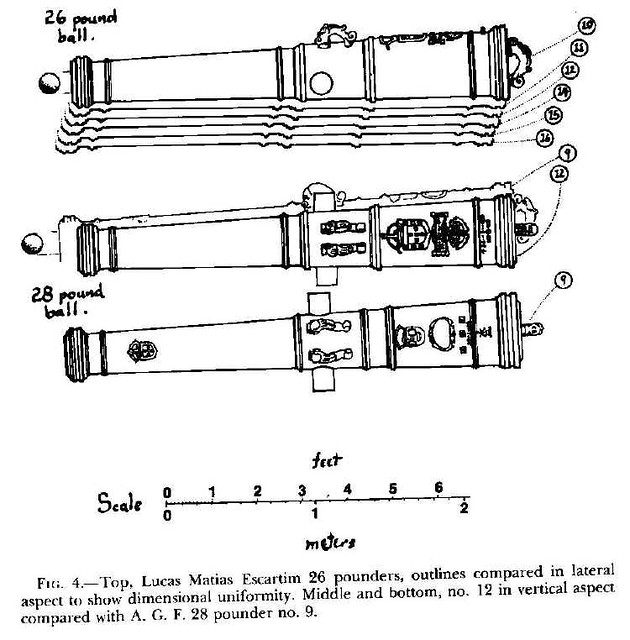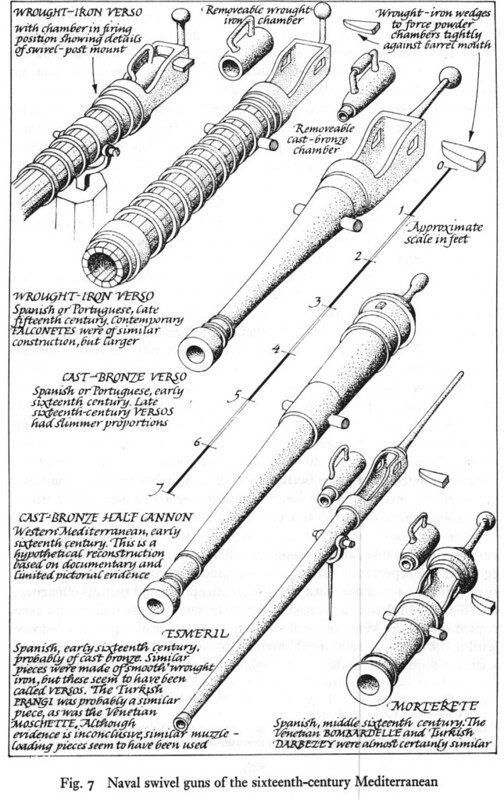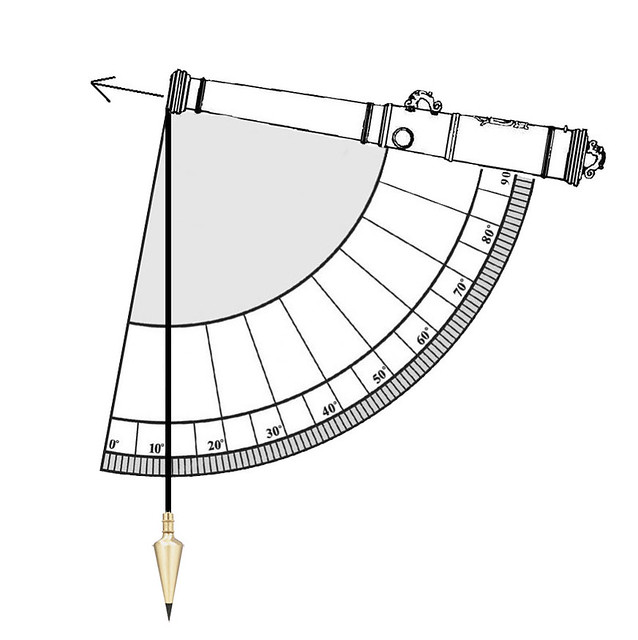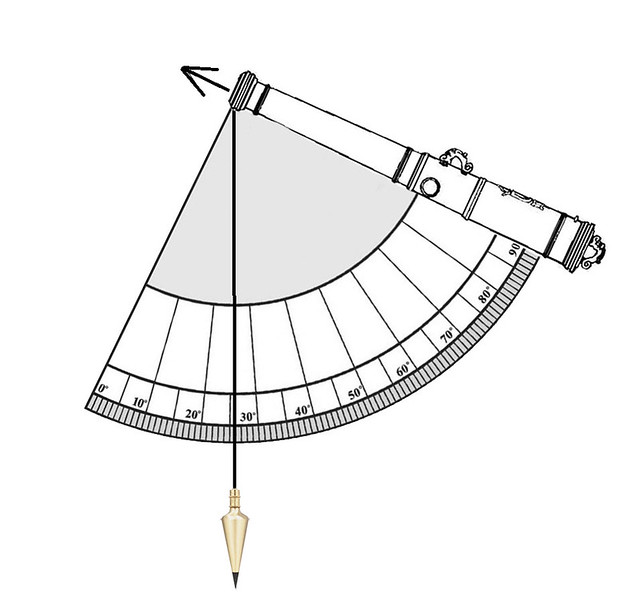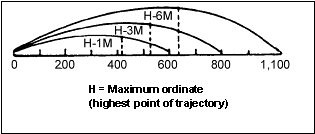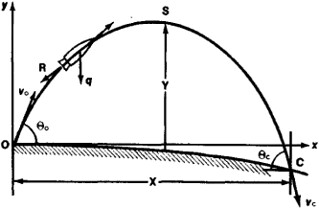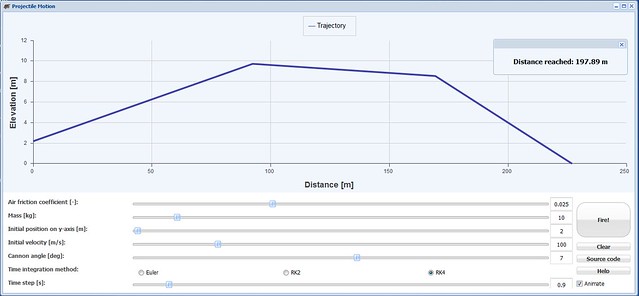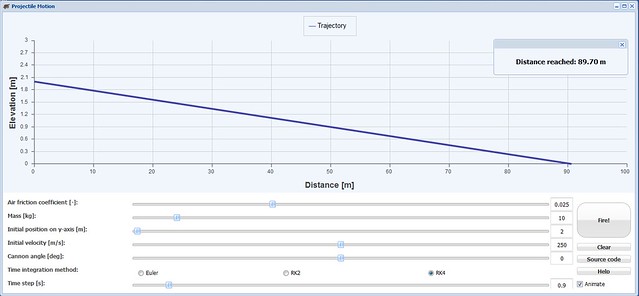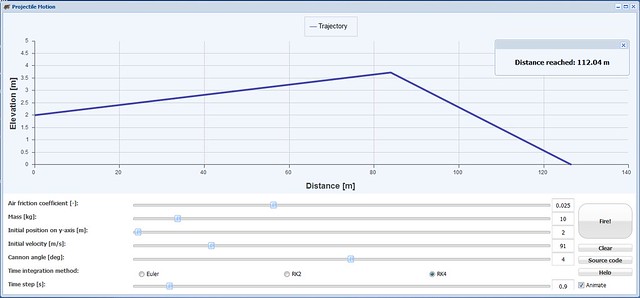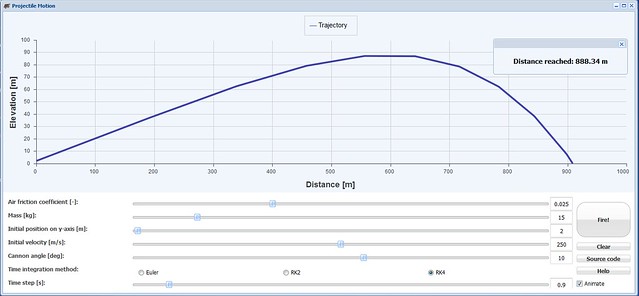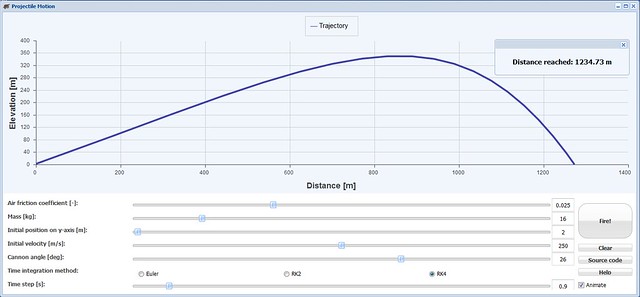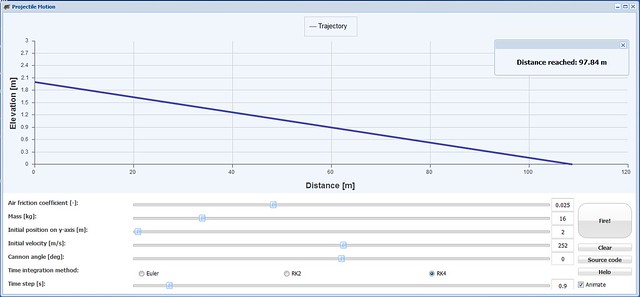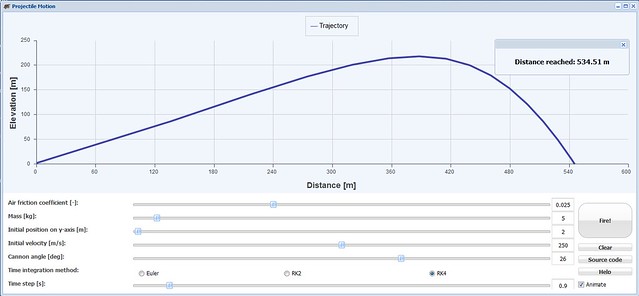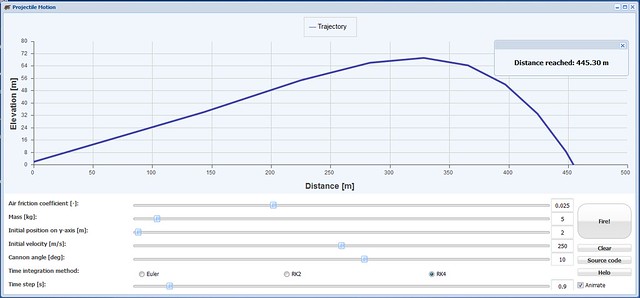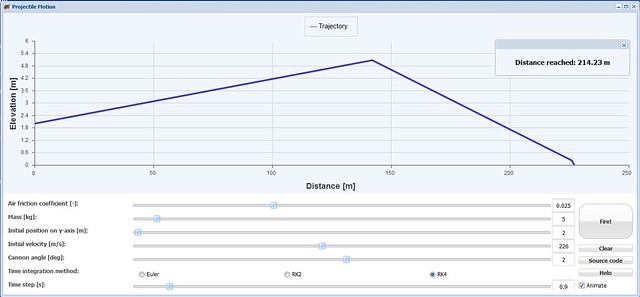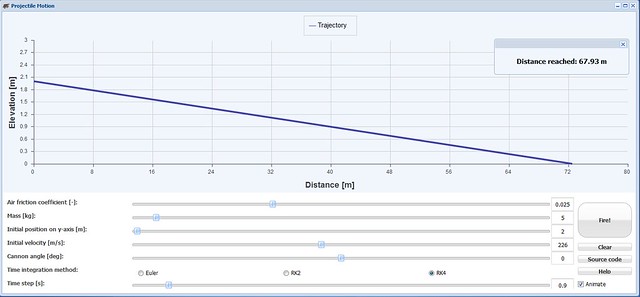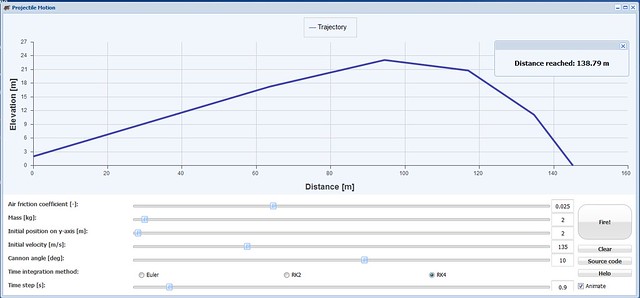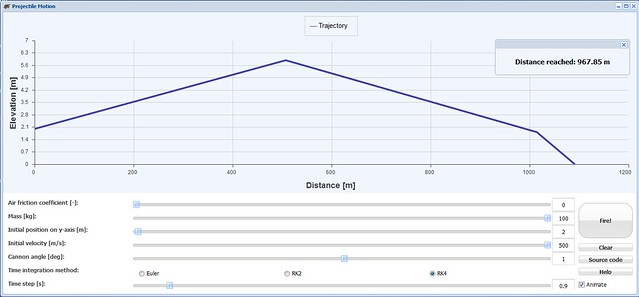Cannon Ballistics Resurrected
Private: Welcome to the Reef! › Forums › Historical Research and Discussion Forum › Cannon Ballistics Resurrected
Tagged: cannon ballistics simulation
- This topic has 4 replies, 2 voices, and was last updated 7 years, 4 months ago by
Jolie Rouge.
-
AuthorPosts
-
-
February 6, 2018 at 4:25 pm #5928
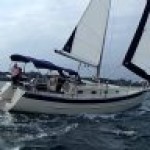 modernknight1Keymaster
modernknight1KeymasterOK so today because of the discussions on modding that have been occurring I decided I would look for an old article I wrote years ago on PA!
Of course it was one of the first things they deleted over there when I was banned. I should probably take another crack at this now because I have changed a lot of things in the game since this was written.
Indeed, Jeffrey and I have had discussions about optimal historical ranges for artillery in the game. One new behavior we have discussed is that ships will not waste their precious ammunition if they are not in optimal damage range (150-300 yards).
Jeffrey has already fixed the AI as part of our realism efforts so that ships will no longer sail off to maximum range and engage with terrible and goofy widely dispersed sheafs of bad effects from distance. This no longer happens – so the original complaints which prompted this article complaining that the cannon trajectories appeared to arc too much are almost a moot point now – and will be completely a moot point when Jeffrey is done with his AI work.
First let me say that I love guns. I have been researching and playing with cannon my entire life. In fact look at this cool video I just found yesterday!
Another thing is that I am constantly reading and learning. Only earlier today I posted that the 28 pounder did not exist. Guess what? I was wrong. In some Spanish/Portuguese sources I have been studying I found excellent evidence that large numbers of 11 pounders, 26 pounders and 28 pounders were produced for the Spanish and Portuguese navies during the middle of the 17th century. So I guess I am changing my still unreleased cannon mod once again.
So without further delay – here for your enjoyment is now resurrected another ancient article from PA! that was deleted long ago. I’m glad I saved all this stuff. Hope you enjoy it.
MK
The COAS Cannon Ballistics model really isn’t that bad!
OK so I have decided to post and pin this topic because I am so sick of arguing about it with (what we in the Artillery trade call) “Neophyte Gunners”. I have debated people over and over again that really have no experience whatsoever with guns but continue to pop up criticizing COAS’ ballistics/trajectory model……I assume either because its different in some other video game – or it just DOESN’T LOOK RIGHT to them. In my experience, just because something doesn’t “look right” doesn’t mean it isn’t correct – just as Immanuel Kant argued that just because you can’t prove something exists doesn’t mean it doesn’t exist.
So first let me establish my credentials. I spent 24 years as a Field Artillery officer in the US Army. I retired earlier this year. I spent the last 12 years of my career in a technical functional designation of Simulations, Analysis and Video Games.
During my career as a combat artilleryman I served as an actual gunner and a Fire Direction Chief before I became an officer. As a Lieutenant I commanded three platoons. A 42MM Mortar Platoon, an M109A3 Howitzer Platoon, and a COLT (Combat Observation and Lasing Team Platoon) in command of 70 of scouts and forward observers. I had over two years of command. I am a graduate of the USAFAC Basic and Advanced Courses in Artillery. I am a graduate of the AF Joint Close Air Support School and the Advanced Simulations Course at the Naval Post Graduate School, Monterey, CA. For over six years I served as the Chief of Simulations and Experimentation with several of the Army Battle Labs to include the (Fires Battle Lab) where I designed, planned, and integrated dozens of experiments and exercises concerning all matters of accurately portraying artillery, and advanced parabolic ballistics models in this venue. I ran one of the three largest Army training centers in the world for four years. I am an inductee of the Honorable Order of Saint Barbara http://en.wikipedia.org/wiki/Order_of_Saint_Barbara, the Order of Saint George and my highest award is the Legion of Merit http://en.wikipedia.org/wiki/Legion_of_Merit
Bottom line is that I have fired thousands of artillery rounds both modern and obsolete and consider myself an expert on this subject. I am currently employed as a consultant that provides expert advice and reviews of all things military, historical, communications, and simulations for numerous venues in the sims, games, and tech industries.
THE TEST: of whether I am correct or the damned critics are right —- I will let you be the judge of yourselves based on the data presented. I am using the NCLab Projectile Motion Simulation to model behaviors we would expect to see in our various 17th century cannon. This simulation is commonly used by everyone from college students to members of the US DOD and DOE. It is simple but reliable. I did not run this test just to validate the COAS ballistics model, but also verify that the new commercial video game I’m working on will have the correct ballistics present as well. The freeware game PA! is developing are free to use these results as well and I am glad to provide advice pro-bono on their UDK ballistics behaviors.
DATA: I didn’t want to get to much into the weeds – Both because I only wanted to spend a minimal amount of time proving my point and because – as I complain about often enough – most kiddie gamer types that we are usually infested with at PA!, don’t really care about accuracy anyway – and thus make really bad assumptions. So – much of my data is a little on the rough side, but adequate. I will quantify my data with reasonable explanations as we go along.
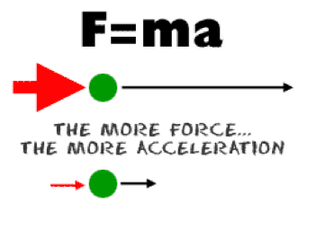
MASS: You will notice that mass varies from the 4 pounder to the 36 pounder. I did not bother inputing exact masses beyond the decimal level. It really didn’t make any significant difference when I ran it a few times, so I used raw mass numbers for four different classes of cannon e.g. 4 pounders, 8-12 pounders, 18-24 pounders and 36 pounders.
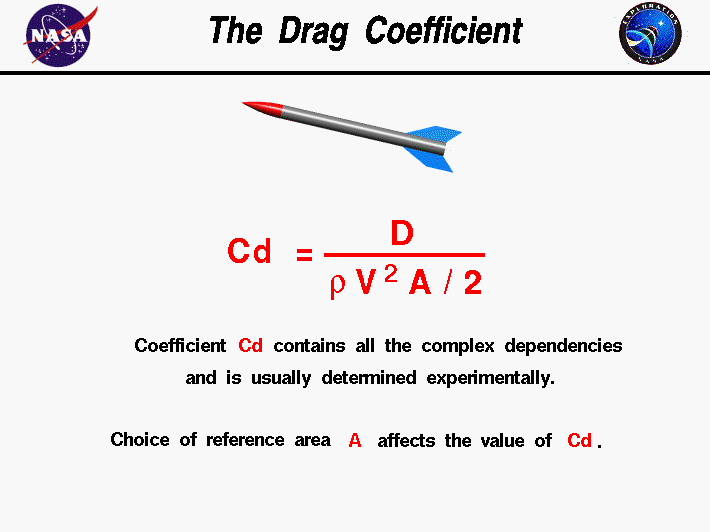
DRAG/Air Friction Coefficient: Using NASA experimentation data for like objects I determined that the average coefficient was between .02 and .03. You will see I alternate these figures in favor of the optimal range solution (giving the benefit of the doubt to the farthest range). In most of the runs you will see a coefficient of 2.5. Many people would not think this significant but it actually is very important. With zero drag, results can be generated that are four times the distance using the same velocity and quadrant elevation numbers. You will notice in most 17th and 18th century gunnery manuals they illustrate dramatic or seemingly over-exaggerated parabola, but I contend they are not exaggerated at all. Once drag and gravity have had their way with reducing the velocity of our flying projectile it drops like a stone – in many cases almost vertically.
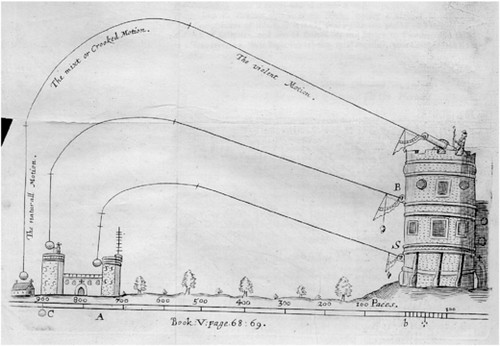
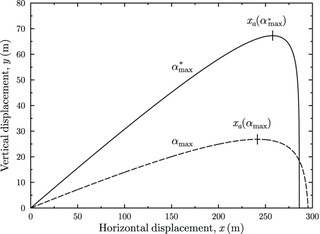

QUADRANT ELEVATION: This is simply the angle a gun is positioned when it expels its ordinance. For the average 17th century naval cannon the standard angle was 10 degrees. It is obviously possible to go below 10 degrees using the elevation wedge – even to negative degrees if desired.
For our test runs you will see that some of the quadrant numbers entered are between 0 and 3 (meaning the gun tube is almost level), In a few runs I set the simulation to just below standard quadrant elevation at 5 to 8 degrees. Whenever I did that I was trying to achieve optimal range numbers for that test. That’s what you will see reflected in the charts. For most of these tests you will notice that the entry number on the y axis is 2 meters reflecting that the naval gun is on a deck two meters above the water level. I needed to do this to show trajectory intersection with an enemy ship that would reflect a hit or damage below the level of the gun fired.
I did set the numbers to negative degrees to observe differences in hit intersections occurring below the level of the gun in near boarding/near point blank situations. The results were inconclusive and so not included here. Perhaps if my y Axis entry number were higher to reflect guns on the upper deck of a 1st Rater ship of the line, there would be a significant result, but I did not want to go into that level of detail and my point is easily proved anyway without having to go there.
The maximum quadrant elevation numbers I could find from 17th century ordinance tests on a naval gun carriage was 26 degrees. I verified this number as accurate using several large scale models I have of Dutch and English 17th century naval pieces and an actual period gunner’s quadrant. Some naval carriages could obviously not elevate to 26 degrees. The maximum quadrant I found from contemporary testing was 47 degrees, but this was obviously using a land field piece’s carriage. I actually ran numbers on this just out of curiosity, but did not include the numbers here because they are irrelevant to this test. The distances did surprise me however.

VELOCITY: Obviously they could not record muzzle velocity in the 17th century. However there have been numerous modern tests of period guns where velocity was one of the areas measured. The highest velocity numbers I discovered were from a huge bronze Spanish gun (40 pounder probably forged in Belgium). The number was shocking because it was so much higher than anything else I found. The test from a single firing showed 590 meters per second (m/s). I entered that into the simulation and surprisingly did not produce ranges that much further than the 36 pounder with far less velocity but with similar drag and mass. I did not include those numbers in this test because I consider them to be an outlier. I would also mention that the only way they could have achieved that velocity was with a very large black powder charge. You would not have been able to continue to use that gun for very long using that much powder. I would actually be afraid to fire it again.
Velocity in our test is a function of the amount of propellant (black powder) used and the length of the tube of the gun. The most consistent numbers I found were between 100m/s and 250m/s . The average was about 390 to 400 MPH which converts to a about 175m/s. An assumption I made given the different guns in this test, was that black powder propellant charges producing velocities of 180m/s to 250m/s were maximum charges and master gunners would not have allowed their crews to keep up a sustained fire using that amount of powder. In situations where max charge was used, the gun generally would be allowed to cool for a couple of minutes after swabbing out the tube with water before being loaded again. The type of heat that is produced by that amount of powder could immediately ignite the next powder charge as it was being positioned – blowing the powder ladle and possibly the powder man’s arm with it towards the enemy.
Max charges would have been used for determining range, chasing, and as the ships closed to boarding distances. High velocities can potentially cause four times the damage of a standard safe charge, and there was no chance of missing at that range. *Note: Damage is not the subject of this post/test. I do discuss damage in some detail in Nixarass’s cannon mini-mod thread. http://www.piratesahoy.net/threads/realistic-cannon-fix-mod.15030/
For most of the tests I set the Velocity to reflect what I believe to be a “Safe” or standard charge.
You will notice a few of the test charts include max numbers just to reveal what the maximum ordinates of the trajectories are.
MAXIMUM-ORDINATE: or Max Ord is the term used in the Artillery/Ballistics discipline to describe the Vertex Height or Apex of a given trajectory. This is indeed what we are after in this test. By reviewing the elevations in meters of the Max Ords of each particular trajectory chart in our tests, we can determine whether or not the high arcing trajectories in COAS are correct or incorrect. The charts will visually tell the story and the results will be immediately obvious.
We will review the following sets of charts in this order: 18-24 pounders, 36 pounders, 8-12 pounders, 4 pounders
Test 1: 18-24 pounders: Both the 18 and 24 pounders were originally invented by the Dutch. The English copied both and eventually produced an 18 pounder that was uniquely of English design and was known to outperform the Dutch 18 pounder. The 24 pounder became a standard all across Europe for over 200 years. I lumped the 18, 20, and 24 pounder together because the mass of the projectile is so numerically close in all three cases.
Figure 1. Our test illustrates maximum powder charge/velocity with a standard 10 degrees quadrant elevation firing angle. You should immediately notice that even with a standard aiming angle that the elevation of the trajectory Max Ord is about 78 meters high. The USS Constitution is 67 meters high from the waterline to the top of her main mast. She is a very tall ship for her type and taller than most ships of the 17th century by at least 5 meters. At about 460 meters away our cannon rounds would have lobbed over 10 meters above her mainmast. Hmmmm. Interesting. Notice that the maximum range achieved would be between 600 and 700 meters away on the standard quadrant. This would have been a very inaccurate round using a 17th century smoothbore with lots of lateral and elliptical dispersion. Remember that optimal accuracy was achieved at 150 to 250 yards for most 17th century cannon (with the exception of the small pieces)
Figure 2. Reflects a minimum powder charge/velocity with a below standard quadrant elevation of 7 degrees firing angle. The range falls within the optimal accurate range so we would probably come fairly close to what the gunner was aiming at. Notice that the max ord is over 9 meters above the gun EVEN AT this close range – that’s 29 feet and as tall as many three story buildings. Hmmm wow that trajectory has QUITE an ARC now doesn’t it. LOL
Figure 3. Illustrates Max Charge/Velocity and Max Quadrant of 26 degrees elevation to achieve max range. I really thought it would go further and with a little more powder and elevation it does. However, it should be obvious that this is a very inaccurate round at a range of just over 900 meters. That’s almost a kilometer and 2/3rds of a mile. Also lets take a look at the Max Ord on this trajectory, because in our favorite game COAS our 24 pounders achieve 900 meters with ease – twice that far actually. Hmmmmm…. our trajectory’s max ord is over 310 meters high. That’s as tall as the Shard building in London (87 stories high). WOW! I think that’s even higher than the arc in COAS??? Keep in mind a captain would never tell his gunners to fire his guns at max elevation with max powder charges, so this is a fantasy situation in my opinion. It still more than validates the COAS ballistic model as not being far off from reality.
Figure 4. Illustrates a half “SAFE” charge/velocity firing at close range with a level quadrant elevation of 0 degrees. This is the first time we see no arc in the trajectory, but notice that our intersection of the enemy target is less than 50 meters. We can’t miss, but we might want to fire max charge to achieve more damage.
Figure 5. Illustrates that desire to achieve more damage with a max charge/velocity. Our guns are once again set lower than standard at 0 degrees quadrant. Notice that there is no arc and that we intersect the enemy above his water line at 89 meters and closer. So what if we want to hit the people on the deck at that range?
Figure 6. Illustrates that desire to hit the enemy on deck. So aiming with a quadrant elevation of 4 degrees we achieve this with a minimum powder charge. Notice that there is a slight arc after 80 meters and that the elevation of our trajectory is a little over 3 meters. That’s a meter higher than the gun position. This is that desired effect that everyone wants. Well look at the following video.
Take a look at this vid. You will notice that when these ships close to below 100 meters there is not that much of an arc at all. In fact its almost a flat trajectory. WOW I thought that COAS shot “RAINBOWS” every round. Hmmmm some inexperienced players with only a few hours of game-play under their belts must not be that observant I guess.
https://www.youtube.com/watch?v=GCQDs6fWE0U
Test 2: 36 pounders: The 36 pounder was the mainstay of the Dutch Navy for a hundred years and thousands were exported to other countries. France’s navy used almost exclusively Dutch 36 pounders until the second quarter of the 18th century. The 36 outperformed the English 32 pounder significantly both in range and damage according to numerous contemporary anecdotes. I chose the 36 over the 32 for this test because of its greater range but I did tweak numbers that I thought would be indicative of a 32 pounder’s performance and the simulation did not show that great of a difference surprisingly.
Figure 1: Illustrates a safe standard charge at a standard quadrant elevation to achieve an impressive range of about 900 meters – with massed fires from broadside it might even be possible that this range achieved a modicum of accuracy. Notice though that our max ord is almost 90 meters high – that’s 300 feet and as tall as a Redwood tree. Almost reminds me of the shape of hmmm…..maybe of a……really wide rainbow.
Figure 2. Illustrates a max charge and max quadrant of 26 degrees. I was convinced this would get me fairly close to 1500 to 2000 yards as this is what I’ve read historically was the range of a 36 pounder at max capability. I was surprised that I was only able to achieve a little over 1200 meters/1350 yards. Notice that our max ord is now at 350 meters/1150 feet. If we were to take the aircraft carrier USS Enterprise and set it on its back end so its bow pointed vertically straight up into the sky, our cannon ball would still pass almost 20 meters over the top of her bow. That’s very high – maybe almost as high as a rainbow.
Figure 3. So I was confused at not getting the historically advertized 1500 to 2000 yards, so I skewed this next simulations run a bit. I reduced the drag coefficient by half a hundredth, I increased the ball’s mass slightly and I increased the propellent charge to the maximum I thought would be safe without blowing the gun up. These entries could be realistic given the right conditions. You can see that I did fall within the expected historical outcome at around 1800 meters/1970 yards. Look at our max ordinate though….we are now at over 530 meters high (that’s as high as a 96 story building or the worlds largest recorded tsunami at 1740 feet). We’re definitely in rainbow territory now.
Figure 4. This chart illustrates a safe powder charge that could be sustained almost continuously for hours. We see an almost level quadrant at 3 degrees and we see the flattest trajectory yet. We have an almost unnoticeable arc with the trajectory rising only three tenths of a meter before making contact with our enemy at the same height above the water at only 96 meters away (295 feet). I feel that this is a very realistic outcome and what we would see very commonly at this range historically. However I must point out that if you look at COAS – at the video I provided above and my other videos, you will see that COAS does not have those crazy “rainbow arcs” at this range. It is just as flat as it shows it modeled in these results.
Figure 5. This chart illustrates full charge/velocity at zero quadrant elevation. Notice that the trajectory is completely flat and with our maximum powder charge we are punching a hole through our enemy’s hull just above the waterline at about 100 meters (328 feet) away. Again very realistic and while you might see a very slight arc at this range in COAS, it is not that unrealistic.
Before anyone scoffs at these numbers I would like for you to think about just how immense a 36 pound gun is. The average 36 with carriage and tackle weighed in at over 9000 lbs (4090kg). That is like a couple of cars on top of one another. The guns length averaged at just over 12 feet long and had a gun crew of 8 to 10 men. The ball she threw was just a little smaller than a modern bowling ball. When a warship of the line unleashed a broadside of these monsters, it instantly became 2000 lbs (900kg) lighter. I have witnessed the power of gun powder – both modern smokeless, cordite, and old black powder. I have watched it lob rounds high into the sky and out of sight. I have been injured badly by powder burns and I have also had to light the spent extra powder increments on fire to destroy them after an exercise/battle. I have watched the bags alone spew a pillar of fire hundreds of feet into the air. The numbers this model is producing are not at all unrealistic to me.
Take a look at this video and see what you think. The ranges look like they are further than those in the tests and therefore higher arcs, but the close range engagements look just fine to me.
https://www.youtube.com/edit?video_id=ZJ1lGzCXMRw
Test 3. So for the first half of our progression up the ladder in COAS we are playing with small ships with 8 to 12 pounders. Many pirates opponents also have these smaller ships. I also couldn’t help thinking that many of our junior players that are complaining are experiencing the dreaded RAINBOW Phenomena with these smaller ships, so I had to do some runs with smaller guns. The mass was similar for 8 and 12 pounder balls, so I lumped them together.
Figure 1. First I wanted to see how far we could get with the smaller ammo. This chart illustrates, max charge/velocity and max quadrant elevation of 26 degrees to achieve a maximum range of over 540 meters (over 1750 feet). I thought this was respectable for the guns size, but notice that the max ord is almost 220 meters. Quite an arc and here is where I’m beginning to see our problem. In COAS the 12 pounder culverines can fire farther than this – especially when our gunnery skills and perks are maxed out and in place….Not realistic and it produces an arc that would also be higher than in reality. Still the realistic arc is still quite high – maybe even Rainbow high. He he
Figure 2. Illustrates a dramatic difference over figure 1. We are at max charge but standard quadrant elevation of 10 degrees. Our trajectory puts us at only 90 meters short of our first round at max elevation but notice the dramatic difference in our max ord. The apex of our trajectory is only about 60 meters. Now we are hitting the Constitution’s masts instead of flying over them. Smaller adjustments obviously make a larger noticeable difference/impact on the smaller guns. This caused me to really play with the sim a lot and I really had fun with it, but will not waste time showing all of the additional tests I did. I did not include a chart that showed safe standard charge at max quadrant, but will tell you that the range was almost exactly another hundred meters short of figure 2 and 90 meters max ord.
Figure 3. Illustrates that historically recorded optimal engagement once again with an impact range against our enemy of about 190 meters away, achieved at the same height as our own firing gun. We used nearly a max charge and an almost flat quadrant elevation of 2 degrees. Notice that we see a slight arc up to 4.5 meters max ord. I loved this test result, because I’ve seen this same identical arc occur in COAS hundreds of times.
Figure 4. We see another historically relevant optimal engagement range of around 150 meters away at our same height with standard safe charge we could fire all day and a little below standard quadrant at 7 degrees. We do see a more significant arc in our trajectory now with am almost 10 meter max ordinate. So our round is flight almost 8 meters higher than we are before it descends. A very noticeable arc and again one I’ve seen play out in COAS over and over again. NOT what I would describe as a rainbow though.
Figure 5. OK so the enemy is approaching boarding distance and we are outnumbered. We are ordered to fire max charge at point blank range. You can see by the chart that we are at zero quadrant elevation and have a perfectly flat trajectory continuing to hit our enemy above the water line from 70 meters away until we are gunwale to gunwale.
I decided to do a few more runs using 4 pounders.
Test 4: 4 pounders – The pea-shooters we are forced to use at the beginning of the game. Some of us more advanced players prefer a tiny little ship to cruise around in also after we have overcome all of the other challenges in the game.
Fig 1. I assumed that very few would max charge a little thing like the four pounder, so went with a standard safe charge and standard quadrant elevation in the first test. Notice that we achieve a respectable 140 meters at the same height which falls right into an historically expected optimal outcome. Our trajectory attains a max ord of 23 meters (75 feet high). I would call that trajectory a little rainbow. Its almost the perfect shape with the height being just a little over half the length.
Fig 2. So we are being chased by pirates and we don’t care if our guns blow up. We are overloading them just a tad to attempt more damage and range. We level our tubes to 2 degrees elevation and continue to fire. A very flat trajectory is achieved even with this small gun. Our max ordinate rises only a half meter above us before it descends to impact on our blackhearted enemies at same level at 65 meters away. Been there done that and got the T-Shirt…….in COAS.
So after all these tests I decided to attempt the fantasy flat trajectory that everybody thinks we should have. So assuming we are keeping our 17th century guns and not replacing them with modern 102mm, 105mm/M1 tank main guns that do have a flat trajectory(mile a second velocity), I decided I would break all the rules. After I ran about a dozen runs playing with the numbers I achieved close to the flat thousand meter trajectory that historical idiots think we should be able to achieve in game. In order to get there I had to zero out drag/air friction coefficient so that our balls are not affected by drag/friction. I had to maximize mass making our 16kg balls 100kgs, then I maxed our velocity to 500 meters a second which would be attained by our 36 pounder being made of modern titanium and able to swallow about 6 or 7 pounds of black powder when normally it would only take 20 ounces or less maximum. I set our gun at 1 degree of quadrant elevation AND……YEAY I achieved our non rainbow thousand meter magical flat trajectory with only about a 6 meter maximum ordinate and with the round only rising about 4 meters higher than my position. You guys feel free to use this data for your continued adventures in World of Warcraft or Assassin’s Creed.
So my conclusion is that COAS has a pretty damn good ballistics model. With a lifetime of experience of playing with big guns for real I never thought it was that bad. I would expect that from the Russians anyway. The Russians are known for having some of the best trajectory and ballistics modelling in the world. For years we studied the Fenderkov algorithm. I was proud to assist in merging it into several of our own simulations to achieve really excellent results. I have always been impressed with the Russian work and I know based on hundreds of hours of game-play in COAS that this wasn’t just thrown together. There was definitely some thought behind it.
What I do see from these tests is that some of our guns are firing too far in the game. That’s how I plan to better this so called problem. For GOF Eras I plan to dial down the accurate and max ranges of the guns to historic precedents and outcomes from these simulations runs. I will encourage Luke to do the same with GOF 2.0.
It just means you will have to get closer before you can shoot…..and that’s A-OK with me Mates.
MK
-
This topic was modified 7 years, 4 months ago by
 modernknight1.
modernknight1.
-
This topic was modified 7 years, 4 months ago by
 modernknight1.
modernknight1.
-
This topic was modified 7 years, 4 months ago by
 modernknight1.
modernknight1.
-
This topic was modified 7 years, 4 months ago by
 modernknight1.
modernknight1.
-
This topic was modified 7 years, 4 months ago by
 modernknight1.
modernknight1.
-
This topic was modified 7 years, 4 months ago by
 modernknight1.
modernknight1.
-
This topic was modified 7 years, 4 months ago by
-
February 6, 2018 at 8:05 pm #5935
 modernknight1Keymaster
modernknight1KeymasterNow these are cool videos. Thought I would add them to this discussion because they are right at home here. Beautiful replica bronze 24 pounders of the Dutch pattern. The type of guns that the Dutch built Swedish flagship Wasa had aboard. MK
https://www.youtube.com/watch?v=_lqdQzxBW6o
-
This reply was modified 7 years, 4 months ago by
 modernknight1.
modernknight1.
-
This reply was modified 7 years, 4 months ago by
-
February 9, 2018 at 8:49 am #5987
Jolie Rouge
ParticipantI remember that article from when I’ve read it on PA, best read ever!
COAS ballistics never felt wrong for me, but then I can say we’ve almost the same point of view even if I don’t have 24 years of experience, just 8 month (back then in 1992 the long term). -
February 9, 2018 at 6:02 pm #5992
 modernknight1Keymaster
modernknight1KeymasterI’m glad you enjoyed it.
Let me tell you that Jeffrey just amazes me continually. When I tell him how ships should behave and what they should and should not do – he finds ways of building new rules into the code to add AI to the mix so that they do as I ask.
They almost seem smart now. Wait until you see all of the changes complete because once they are, very rarely will you see them engaging from great distances with high arcing parabola.
The times that you will see that the very most – is when you fire at long range targets yourself. Most engagement sheafs will occur within an optimal damage range fan of 150 to 300 yards with grape often being utilized under 100 yards. Battles with be much harder in the future because your enemy will no longer make such dumb moves in battle.
MK
-
February 9, 2018 at 7:45 pm #5993
Jolie Rouge
ParticipantNow that will save lots of ammo and frustration with trying to get in range with those tiny 4 pounders, while he’s happily shredding my little Lugger.
Combined with the double line formation this will be awesome; aww, I need a fleet!
Scratch that, first I need officers, then some of your treasures (and it does feel like finding a treasure!) and then I can think about ships…Wait a second, would it be possible to by into a shipyard so you could order a ship?
I’ll post that in Vincent’s thread of good ideas.
-
-
AuthorPosts
- You must be logged in to reply to this topic.
by modernknight1
